The MGA With An Attitude
THERMOSTATS for the Twin Cam - TC-324
This article is offered by Mick Anderson in Australia
MGA Twin Cam Thermostat
An explanation of the operation of the thermostat on a MGA Twin Cam. The following image and diagram show the main parts of the Twin Cam thermostat.

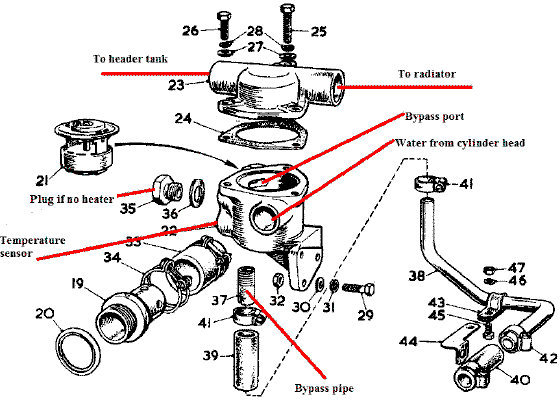
It is important that the Twin Cam has a combined sleeve type thermostat. These can be difficult to obtain. The images below show a modern type thermostat which should not be used, if possible, and the correct combined sleeve type.
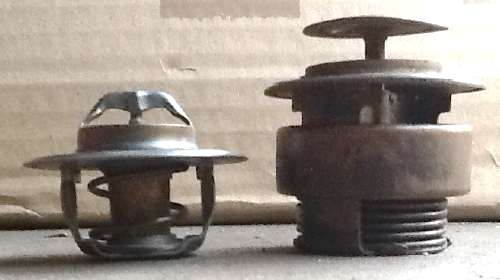
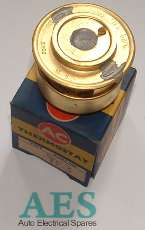 A suitable type is the AC TF3. (Now AC Delco). Other companies that made these thermostats are Smiths and Quinton Hazell. Many British cars of the period had thermostats suitable for the Twin Cam.
A suitable type is the AC TF3. (Now AC Delco). Other companies that made these thermostats are Smiths and Quinton Hazell. Many British cars of the period had thermostats suitable for the Twin Cam.
Various temperature ranges are available and the choice has to be made on which is most suited to individual circumstances. The Twin Cam Technical Data Book lists 70-75 degrees C (158-167 F). The Workshop Manual lists 50-55 degrees C (122-131 F). The Service Parts list shows that the thermostat was changed at engine number 194.
The water flow is as follows. During the warm up period the thermostat sleeve partially closes off the flow of warm water from the cylinder head into the thermostat housing. At the same time the sleeve leaves the bypass port open. Because the thermostat disc is closed the warm water flows from the cylinder head through the thermostat housing and via the bypass pipe back to the water pump. This flow also passes the warming water close to the bottom of the thermostat
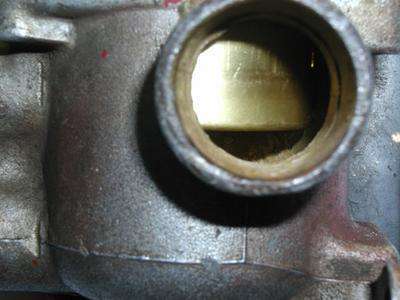
When the water reaches the required temperature the thermostat disc rises to the open position and the sleeve moves up with it. This results in the port for the heated water from the cylinder head to be fully open and at the same time the sleeve now blocks off the bypass port. From this it can be seen that thermostats with a combined sleeve should be used wherever possible. With no combined sleeve the bypass port will always be open and when fully hot part of the water will still go down the bypass tube instead of through the radiator. This can be a reason for Twin Cam engines running too hot under extreme conditions.
Running an engine without a thermostat should have the bypass port or pipe blocked. The easiest method would be to block the bypass pipe hose fitting with a plug. This plug should have a small bleed hole drilled through it to allow draining any accumulated coolant and prevent trapped coolant stagnating.
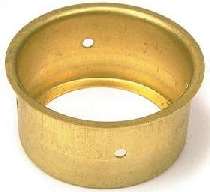
A blanking sleeve that is commercially available may be able to be used. The sleeve must not cover any part of the inlet port from the head or the openings for the heater or the temperature sensor. If used a small bleed hole in the sleeve should line up with the bypass port. An extra drilled hole may be required. The thermostat will already have a bleed hole. These small holes are to allow complete draining and prevent air traps.
If a modern thermostat without a combined sleeve is used some water will always go down the bypass instead of through the radiator even when hot. However in this situation you cannot block the bypass as it would lead to no flow when the thermostat is closed. This could lead to local overheating in the cylinder head as there would be no warm water flowing past the bottom of the thermostat to commence correct opening.
|